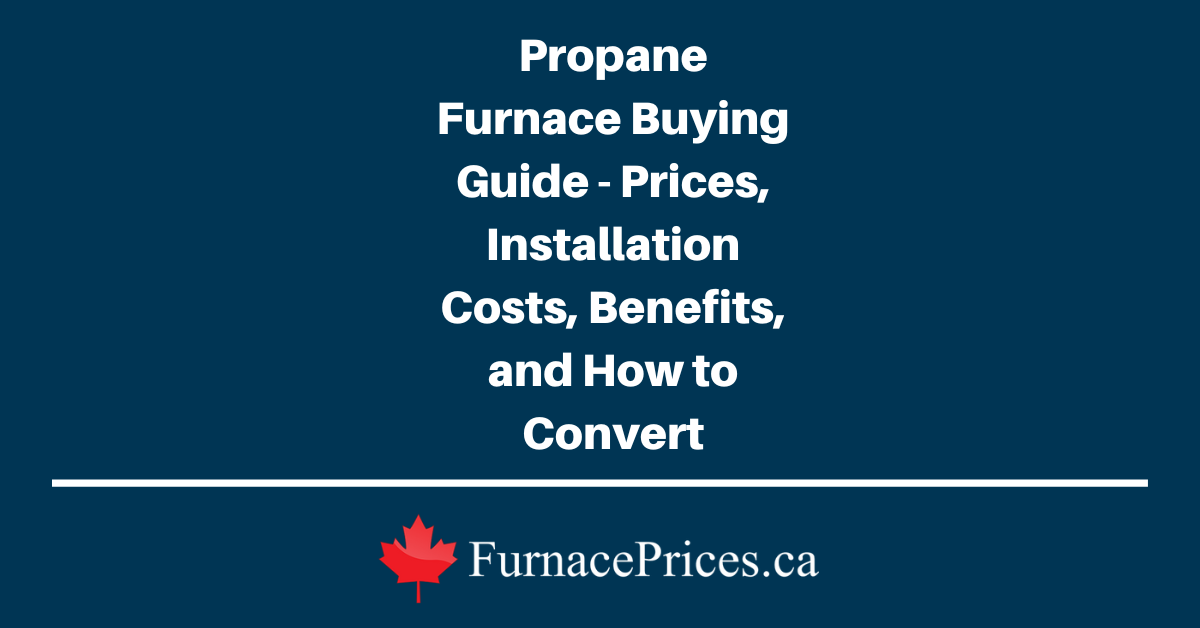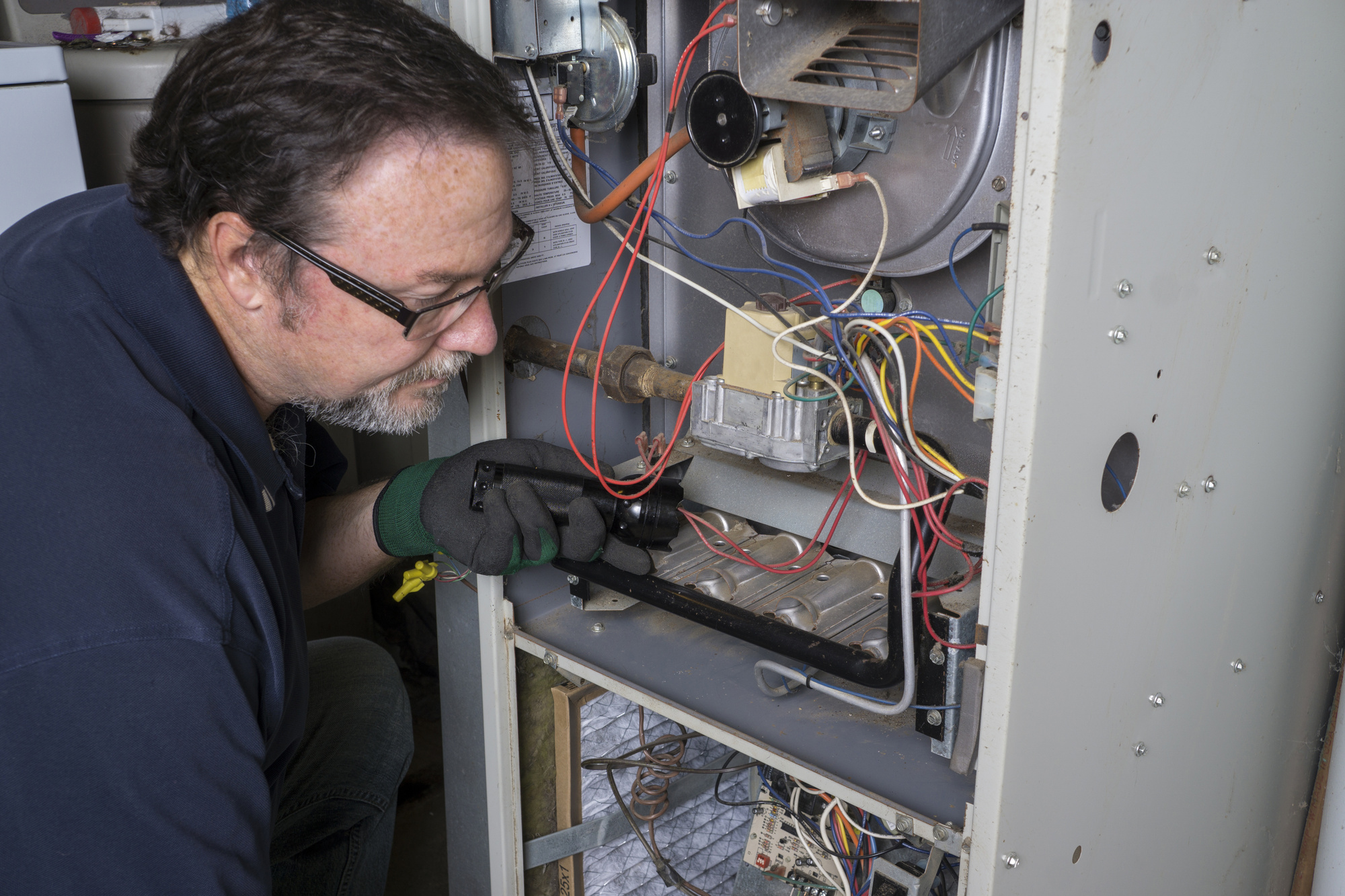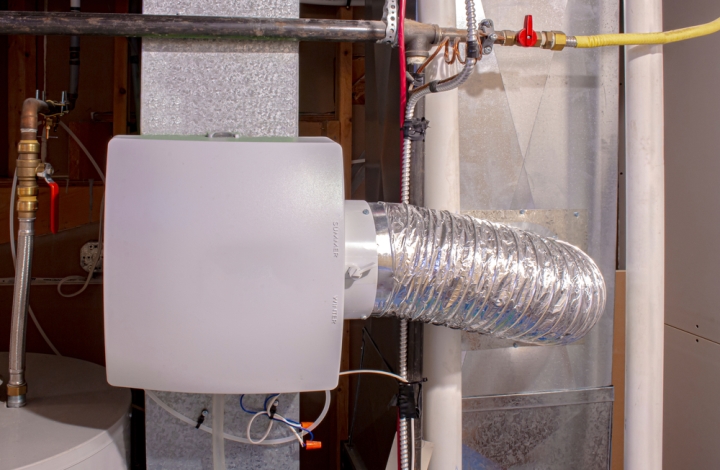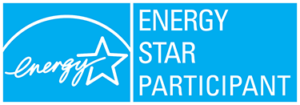✔ Expert-reviewed for accuracy and completeness.
You May Also be Interested in Reading:
The Best Furnaces – What to Buy
Furnace Prices and Replacement Costs
The average cost of buying a new furnace, or replacing your furnace in Canada varies based on a variety of factors. Typically, a new residential gas furnace including installation, will cost between $4,000 – $6,500 on average.
This price is just a general estimate of course, and you’ll typically have to get a free in-home estimate done by a local HVAC contractor to get an actual price based on your home and your needs, and budget.
Things that can affect the price include:
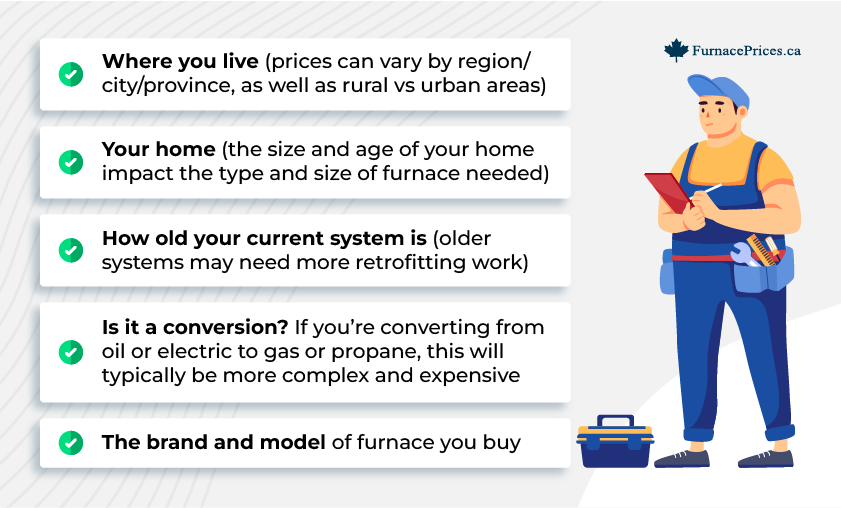
- Where you live (prices can vary by region/city/province, as well as rural vs urban areas)
- Your home (the size and age of your home can impact the type and size of furnace needed; every home is different)
- How old your current system is (older systems may need more retrofitting work to meet modern building codes)
- Is it a conversion? If you’re converting from oil or electric to gas or propane, this will typically be a bit more complex and expensive
- The brand and model of furnace you buy
These are some of the main factors that will affect the price of a new high-efficiency furnace for Canadian homeowners.
Top Furnace Brands
There are many furnace brands sold in Canada. They all have their pros and cons, however in most cases their products are actually quite similar.
Some of the most popular brands include:
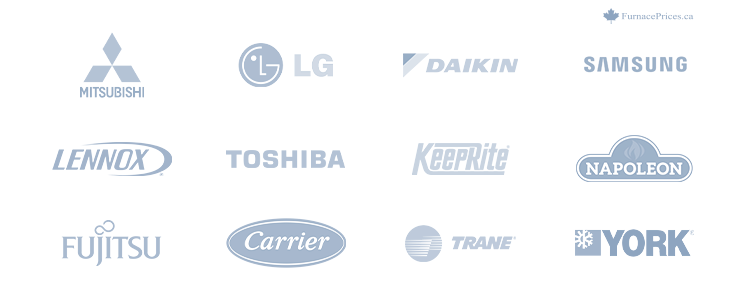
See our list of the Best Furnaces for more recommendation on which furnace brand and which model you should you buy.
Important Considerations About Furnace Reliability
One of a homeowner’s main concerns when buying a new furnace is which brand is most reliable and which one they should buy. But while some may be considered better than others, there is no definitive answer.
The reliability of a furnace often depends on a variety of factors, including how well maintained it is, if it’s properly-sized for your home, and importantly, the quality of workmanship on the installation.
Something most Canadian homeowners may not realize is that the HVAC contractor you select to buy your furnace from is just as important as the brand of furnace you choose.
Why? Because not only do you want an established and experienced company that will do a good job (just like any other home renovation job), but you will also be relying on this company to provide ongoing support.
That’s why we recommend choosing a company that offers a good warranty on the labour and installation (ideally, at least 1 year). And most importantly, they should have all the necessary licenses and certifications, insurance, and a good reputation.
That’s why we at FurnacePrices.ca created our independent 15-point Certification program to make choosing a reliable and trusted local HVAC contractor quick and easy for Canadians!
When Should You Replace Your Furnace?
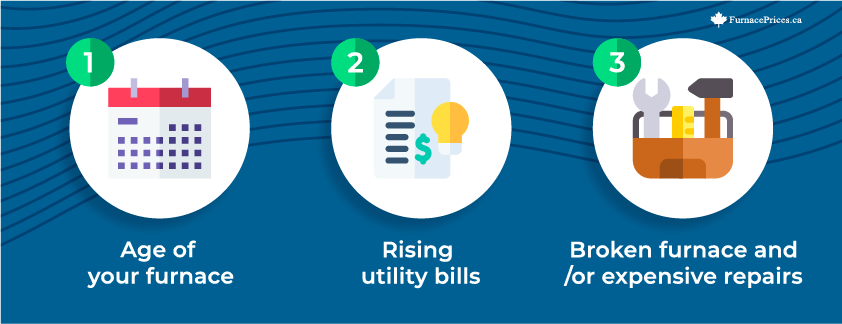
- Age of your furnace: If your furnace is over 15-20 years old there’s a good chance that it is not a particularly energy-efficient model or that it may no longer be operating at its initial efficiency level. Many homeowners don’t have their furnaces cleaned and properly maintained every year, which leads to a gradual reduction in operating efficiency. You may be surprised to learn that your 15, 20 or 25-year old furnace is actually only operating at 50 – 60% AFUE (a measure of efficiency), meaning nearly half your utility costs are completely wasted. Upgrading to a new furnace could mean a reduction in up to 40% in annual heating bills.
- Rising utility bills: Newer furnaces, especially ENERGY STAR® models (95% AFUE and above) waste less energy which means more money in your pocket. Greater efficiency also means less of an impact on the environment.
- Broken furnace and/or expensive repairs: Your furnace has reached the end of its lifespan and repair costs are more costly than purchasing new. Especially when you factor in the potential savings on your utility bills.
Get Quotes
How soon are you looking to buy?*



Learn more about when to consider replacing your furnace.
How long does a furnace usually last?
Most furnaces should last at least 10 to 15 years, and can last as long as 20+ years with proper maintenance and a little bit of luck. That being said, you may wish to replace your furnace before that point if it starts to require frequent costly repairs and replacing it becomes a more cost-effective option.
Further reading: The TRUTH About Furnace (and A/C) Reliability
High-Efficiency Furnaces – The Basics
A furnace provides central heating throughout your home. There are several types of heating systems with one of the most common in Canada being a forced-air furnace.
Forced-air furnaces work by blowing heated air from burning natural gas or propane, through ducts that deliver the warm air to rooms throughout the house via air registers. This is a preferred method amongst consumers because it provides heat quickly and it has a quick recovery time when temperature is decreased overnight to save energy, so it doesn’t take long for the home to warm back up again in the morning.
Modern forced-air furnaces have an energy-efficient fan and motor and certain models can precisely adjust to your home’s heating requirements throughout the day. This saves energy and maintains a more comfortable home.
For the most energy-efficient, quietest operation, and maximum comfort, look for a variable-speed/modulating furnace.
Or for a more budget-friendly option, consider a single or duel stage model.
We compare the pros and cons of different furnace types here >>
Energy-efficient furnaces can also make your home more attractive for resale value, as more and more consumers are conscious of the environment and how their energy dollars are being spent, especially with rising energy costs.
Replacing your furnace is a fairly significant investment, so knowing that it has been recently upgraded is always a bonus for a potential home buyer.
The following video covers some key factors when choosing a furnace for your home.
Or keep reading for more tips below.
Key Things to Know Before Buying a Furnace [Video]
FAQ
What efficiency (AFUE) rating is considered a high-efficiency furnace?
Many experts and organizations (such as ENERGY STAR) only consider a furnace with an AFUE rating of at least 95% to qualify, and current Canadian government regulations require a minimum of 95% AFUE for new furnaces. Some manufacturers market their top of the line models as ultra-high-efficiency, and these tend to have AFUE ratings of 97 – 98.9 %.
What does AFUE stand for?
AFUE stands for Annual Fuel Utilization Efficiency and it measures the percentage of fuel that is converted into useable heat. So a 98% AFUE converts on average 98% of the fuel it burns into heat for your home.
What does BTU stand for?
BTU stands for British Thermal Unit and is a measure of the heating output of your furnace. One BTU is defined as roughly the energy needed to heat one pound of water by one degree Fahrenheit Typical furnaces in Canada are rated between 40,000 to 100,000 BTUs.
What is an ECM motor?
ECM stands for Electronically Commutated Motor and is essentially a type of variable-speed motor which adjusts its speed to ensure precise and consistent airflow in an efficient way. This helps the furnace adjust to the current heating needs (based on your preferences and outdoor temperature), providing increased comfort, quieter operation, and better energy-efficiency.
Get Quotes
How soon are you looking to buy?*



Furnace Types – Single Stage vs. Dual Stage vs. Variable Speed vs. Modulating Furnaces
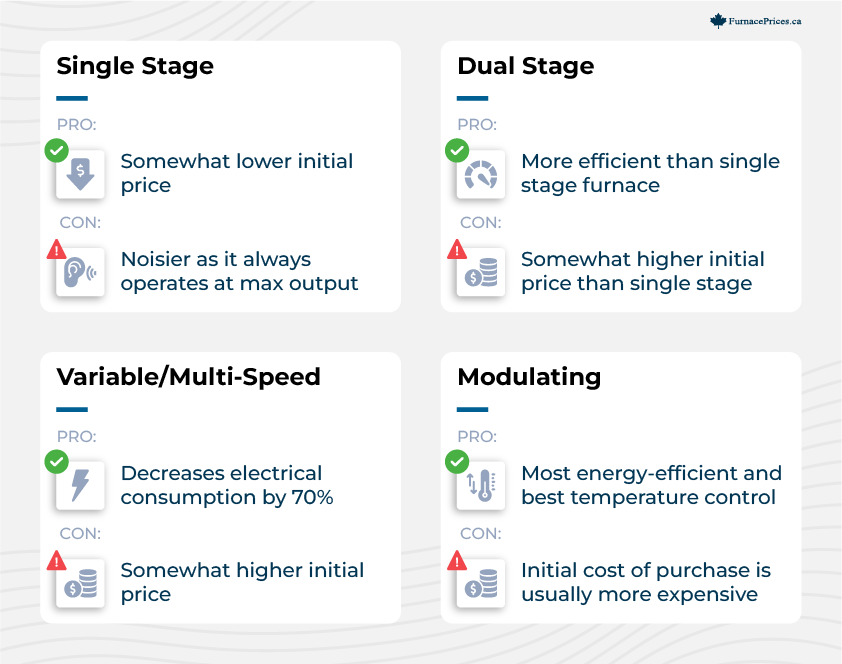
These are the four major “types” of furnace, though a furnace can be both modulating and variable speed (as this refers to burner type and blower speed, respectively). Here’s a comparison of the pros and cons of each one.
See here to read our more in-depth breakdown and comparison of furnace types.
Single Stage
As it sounds, only one stage. With a single-stage model, your furnace is either on or it is off, there’s no in-between.
Pros of Single Stage Furnaces:
- somewhat lower initial price
Cons of Single Stage Furnaces:
- inefficient energy use
- inconsistent temperature delivery throughout your home
- inconsistent temperature control; frequent hot-cold fluctuations
- noisier as it always operates at max output, cycling on and off more frequently
- higher energy bills
Dual Stage
A dual-stage furnace has high and low settings. It starts off in the first stage which is low output. The low output stage meets your home’s heating needs about 60-80% of the time. It switches to the second stage which is high output in response to extreme cold weather.
Pros of Dual Stage or Two-Stage Furnace:
- somewhat better temperature control
- more efficient than single stage furnace
- adjusts to weather changes
- somewhat lower energy bills
- somewhat quieter
Cons of Dual Stage or Two-Stage Furnace:
- somewhat higher initial price than single stage
Variable/Multi-Speed
This refers specifically to the blower, which monitors and adjusts incrementally, to ensure the highest comfort and most precise heat distribution throughout your home.
Pros of Variable/Multi-Speed Furnaces:
- more efficient
- provides more precise airflow and indoor temperature
- quieter
- ECM (an energy efficient) motor: decreases furnace electrical energy consumption by 70% when used continuously
Cons of Variable/Multi-Speed Furnaces:
- somewhat higher initial price
Modulating
This refers specifically to the burner, which adjusts incrementally in order to respond to the heat demands of the home.
Pros of Modulating Furnaces:
- improved temperature consistency
- best temperature control
- most energy-efficient
- typically also equipped with variable speed blower
Cons of Modulating Furnaces:
- initial cost of purchase is usually more expensive
Advanced Furnace Features

The following features and technology are often featured on top-of-the-line ENERGY STAR furnaces. There is certainly nothing wrong with buying a heating system that doesn’t have any of these features, but for those looking for peak performance and efficiency, look for the following. However, furnaces with these features rarely come cheap!
Get Quotes
How soon are you looking to buy?*



- ECM Motors
- Dual heat exchangers: when two heat exchangers are used the furnace is able to draw more heat from the burned gas, which makes them more energy efficient
- Ignition systems: pilot lights are becoming a thing of the past, in favour of an electronic ignition system which increases a furnace’s efficiency rating.
- Programmable & “smart” thermostats: Not a furnace feature per se, more of an add-on. But programmable thermostats are easy to use and will save you money. New ‘smart’ thermostats can learn from your personal heating preferences and adjust your home’s heating automatically, like lowering the temperature during the day when you’re at work.
Turning your thermostat down just one degree each night results in a 2% reduction on your annual heating bill.
Choosing a Fuel Type for your Furnace – Propane vs. Natural Gas vs. Oil

When choosing a fuel type for your furnace the two major options for Canadians are: natural gas or propane. The biggest factor that must be taken into consideration when deciding between a natural gas or propane furnace is whether you live in an urban or rural area. Your location will dictate which energy source is more appropriate for your furnace. Most urban city centers are equipped with natural gas pipelines making it the obvious choice.
In rural settings natural gas pipeline infrastructure is not as readily available or may not be installed, which makes propane the most cost-effective energy source over oil and electrical heating in most cases, due to the high cost of heating oil and electricity in most regions.
One downside is that propane heating requires the installation of a large tank on your property, which is refilled periodically.
Oil is becoming increasingly rare as a heating fuel for homes. Oil furnaces are generally not energy efficient, with some older models having an AFUE of only 60%. That means for every energy dollar only 60 cents is going to heat your home, and the rest is being wasted, making it significantly costlier to heat your home. Not only is money being wasted and energy lost, an oil furnace puts more strain on the environment by burning more fossil fuel, which increases your eco-footprint. This is why so many Canadians are choosing to make the switch away from oil heat.
And with the exception of people living in Quebec who get relatively cheap electricity from Hydro Quebec, homeowners with electric heating in Ontario and elsewhere are increasingly switching to natural gas or propane due to high heating costs.
For more information on conversions from oil or electric to propane or gas, see here.
That being said, heat pumps are an increasingly common type of heating system in Canada. These systems can function as both a heating system, and an air conditioning system in the summer. And because they don’t burn fossil fuels, they’re seen as a key technology in meeting climate goals and reducing carbon emissions.
ENERGY STAR® Furnace Ratings Explained – Is it worth it?
When you see a home heating system with an ENERGY STAR certification in Canada you can rest assured that you are in the presence of an efficient furnace, and high-efficiency means the biggest bang for your energy dollar.
To qualify as an ENERGY STAR home heating system, it usually has to have an efficiency of 95% (AFUE) or more. That means that on average 95 cents of every energy dollar are going to actually heating your home, and that the unit has a fan efficiency of 2% or less. Note, ‘fan efficiency’ refers to the ratio of electrical energy consumption to the total energy consumption of the furnace during heating operation.
ENERGY STAR is administered and promoted in Canada by Natural Resources Canada and registered in Canada with the United States Environmental Protection Agency.
ENERGY STAR home heating systems allow you to save money while decreasing environmental emissions which reduces your ecological footprint. That’s a win for your pocketbook and the environment.
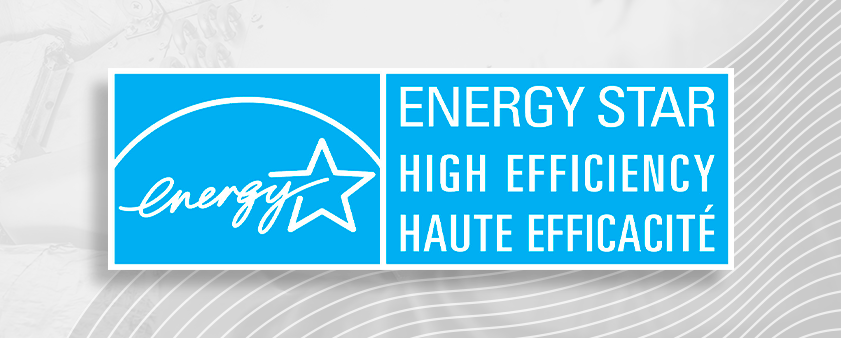
Other Important Considerations
Warranty Coverage
The manufacturer’s warranty varies by brand and also which model you choose, with more expensive models typically having better coverage.
These typically range from 5 year limited parts warranties to 10-year, 20-year or lifetime warranties on key parts like the heat exchanger, and even ‘unit replacement guarantees’.
IMPORTANT: Be sure to register your warranty within the registration period after installation, which is typically either 60 or 90 days after installation, depending on the brand.
Be sure to carefully read the fine print and follow all the requirements to avoid voiding your warranty.
Some warranties, especially ‘whole unit replacement’ ones require annual maintenance and cleaning be done a certified technician.
Also be sure to store your warranty in a safe place in case you need it in the future. At FurnacePrices.ca, we offer free warranty storage and other free benefits when you sign up for a free account with us.
You may also get additional labour warranty coverage on the installation through your licensed HVAC technician who completes your new home furnace installation, typically for a period of one year, but sometimes longer.
Rebates and Incentives
Different provinces have different rebates and incentives available and these are subject to change at any time. In addition, local organizations like utility companies and municipal governments may also have their own HVAC grant programs.
The Canadian federal government announced in 2021 the creation of a grant program of up to $5,000 in incentives for Canadian homeowners to perform energy-saving home renovations, including upgrading the HVAC system. This program is known as the Greener Homes Program.
Check out the latest current heating & cooling government rebates and incentives in Canada.
Plus check out our Local Current HVAC Deals page for offers and promotions from local contractors.
Humidifiers and Air Filtration
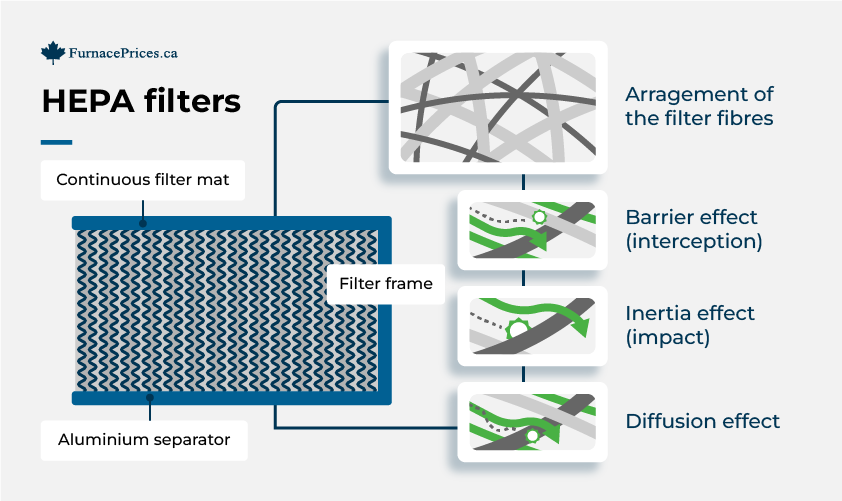
These add-ons can help filter your home’s air and maintain optimal humidity, making air healthier and easier to breathe.
Air filtration systems, especially those with HEPA filters, reduce allergens and pollutants and make breathing easier, while also reducing the chance of mold, asthma flair ups, and other skin and respiratory issues. It is important to change your air filter periodically in order to maximize the efficiency of your furnace.
With the COVID-19 pandemic, Canadians are more concerned than ever about indoor air quality and safety.
| Outside Temperature | Recommended House Humidity |
|---|---|
| -20°F | 15% |
| -20°F to -10°F | 20% |
| -10°F to 0°F | 25% |
| 0°F to +10°F | 35% |
| +10°F and above | 40% |
| Summer months | Off |
Zoned Heating
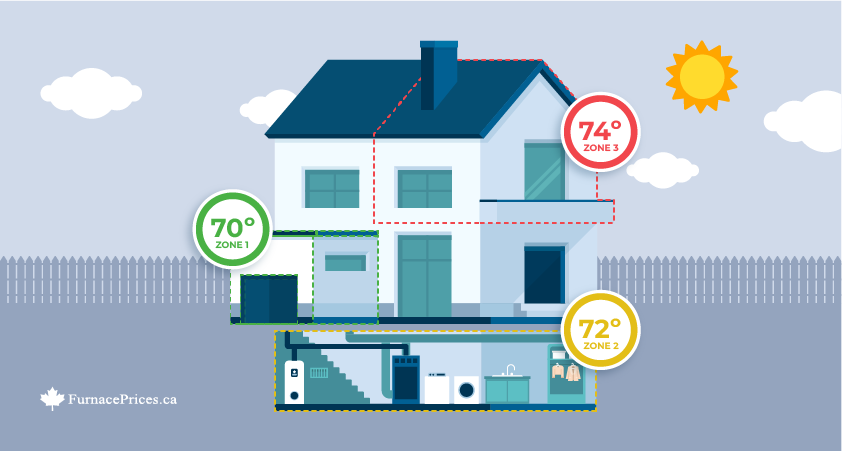
Zoned heating allows you to control the temperature of specific areas of the house, which is a fairly expensive upgrade. It can be beneficial especially with large homes, as it allows you to heat the rooms you use the most, while keeping the others at a lower temperature when you’re not using them.
Most houses are non-zoned = 1 thermostat that controls the heating of the whole house (natural gas furnace or propane furnace). Though individual vents may have manual switches to adjust the air flow for a particular room. Unless you have a system with an ECM motor, you should not close any air vents.
Furnace Sizing & Getting an Estimate
There is a common myth out there that square footage is the only factor required to determine the size and BTU output of a residential home heating system. Actually, many factors need to be taken into account when determining the appropriate furnace size to heat your home.
Other factors that may be considered during a home assessment include:
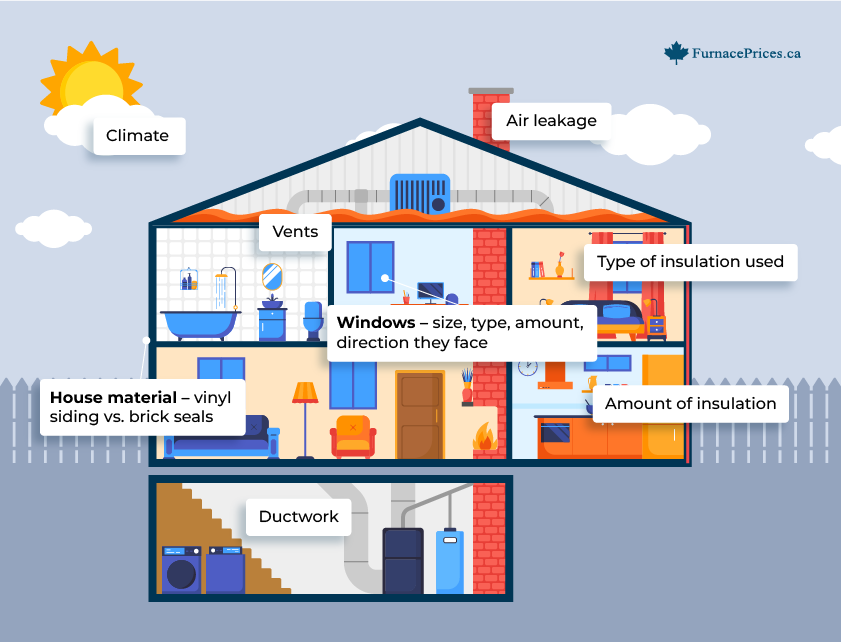
- type of insulation used
- amount of insulation
- climate
- windows: size, type, amount, direction they face
- house material – vinyl siding vs. brick
- seals
- air leakage
- vents
- ductwork
One of our local certified HVAC professionals can assess all of these factors in order to provide you with a home heating system that meets your home’s needs. You can request a free quote from local professionals with the form above.
Summary of Key Points
- The minimum efficiency furnace you can purchase in Canada is now 95% AFUE
- Top high-efficiency furnaces on the market have AFUE of almost 99% AFUE
- The BTU rating needs to be considered when choosing the right size of heating system. Newer furnaces are more efficient so you generally won’t need as high a BTU rating as your old model. Your local expert will help you size your unit correctly.
- In some situations, a heat/loss calculation might need to be conducted by a professional to determine the right furnace for your home and qualify you for government rebates
- A high-efficiency furnace uses less energy and lowers your utility bills, helping offset the cost of upgrading
- Lowering the temperature on your programmable thermostat, even by 1 degree Celsius will result in a decrease on your home energy bill.
The only thing left to do is request a free quote from trusted local heating & cooling companies in your area!
Get Quotes
How soon are you looking to buy?*






